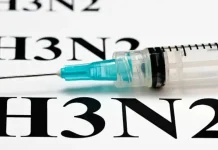Soliqua, a combination of insulin glargine and lixisenatide, is a once-daily injectable medication approved for the treatment of type 2 diabetes. While it offers therapeutic advantages, the Soliqua price can be a concern for many patients—especially those navigating high diabetes drug costs or lacking full insurance coverage.
Retail Cost Without Insurance
As of recent U.S. market data:
-
Retail Soliqua price (1 box of 5 pre-filled pens) can range from $650 to $800, depending on the pharmacy and location.
-
This supply typically lasts for 28 to 30 days, making the monthly cost comparable to or higher than separate insulin or GLP-1 receptor agonist therapies.
-
Without coverage or discount programs, this cost can be prohibitive for many patients.
What Influences the Cost of Soliqua?
Several variables contribute to fluctuations in the diabetes drug cost of Soliqua:
| Factor | Influence on Cost |
|---|---|
| Pharmacy Location | Prices vary across retail chains and regions |
| Insurance Type | Private, Medicare, and Medicaid plans have different coverage tiers |
| Formulary Placement | Whether Soliqua is a Tier 1, 2, or 3 drug affects copayments |
| Manufacturer Pricing | Changes in wholesale acquisition cost (WAC) or negotiated rebates |
| Discount Programs | Manufacturer or third-party savings cards can reduce out-of-pocket expenses |
Private Insurance Plans
Many private health plans include Soliqua in their formulary, but the out-of-pocket cost depends on the plan tier. On average:
-
Tier 2 or Tier 3 placement results in monthly copays between $35 and $150.
-
Some high-deductible plans may require full retail price until the deductible is met.
Medicare Coverage
Soliqua is covered under Medicare Part D. Key points include:
-
Coverage varies based on your plan’s formulary.
-
If in the Initial Coverage Phase, copays can range from $45 to $100/month.
-
During the Donut Hole, costs may rise unless savings cards apply.
-
Extra Help (LIS) program participants may pay as little as $10/month or less.
Medicaid and State Programs
Eligibility for Medicaid may reduce Soliqua’s cost significantly or eliminate copays altogether. State-level assistance programs may also subsidize insulin therapies for qualified low-income residents.
Soliqua Savings Tips: How to Lower Your Costs
1. Use the Manufacturer’s Savings Card
Sanofi, the maker of Soliqua, offers a Savings Program:
-
Eligible patients with commercial insurance may pay as little as $0 per month.
-
The card can be used up to 13 times per year.
-
Visit the official Soliqua savings site for enrollment.
Note: This program is not valid for Medicare, Medicaid, or other federal healthcare beneficiaries.
2. Shop Around Pharmacies
Prices can vary by $100 or more between major chains and independent pharmacies. Tools like:
-
GoodRx
-
SingleCare
-
WellRx
can help compare costs and apply additional coupons.
3. Ask About 90-Day Supplies
Some plans allow for 90-day refills through mail-order services or partner pharmacies, potentially lowering per-dose costs and improving convenience.
4. Consider Patient Assistance Programs (PAPs)
Patients with limited income and no insurance may qualify for Sanofi Patient Connection, which provides medications at low or no cost after application approval.
Comparing Soliqua Cost to Alternatives
| Medication | Monthly Cost (Without Insurance) | Comparable Therapy? |
|---|---|---|
| Soliqua | $650 – $800 | Yes – insulin + GLP-1 combo |
| Lantus (Insulin Glargine) | $300 – $450 | Partial (basal only) |
| Bydureon or Trulicity | $700 – $900 | GLP-1 agonist only |
| Basaglar + Lixisenatide | $550 – $700 | Requires two injections |
Although Soliqua seems costly, it may replace two separate medications, simplifying treatment and potentially lowering the combined cost when insurance coverage or discount programs are in place.
Managing Diabetes Drug Costs
Navigating the cost of Soliqua requires proactive planning. From manufacturer assistance to comparing pharmacy pricing tools and understanding insurance benefits, patients can often avoid paying full retail price. Whether managing your diabetes with commercial insurance, Medicare, or no coverage, there are strategic ways to make Soliqua more affordable.




